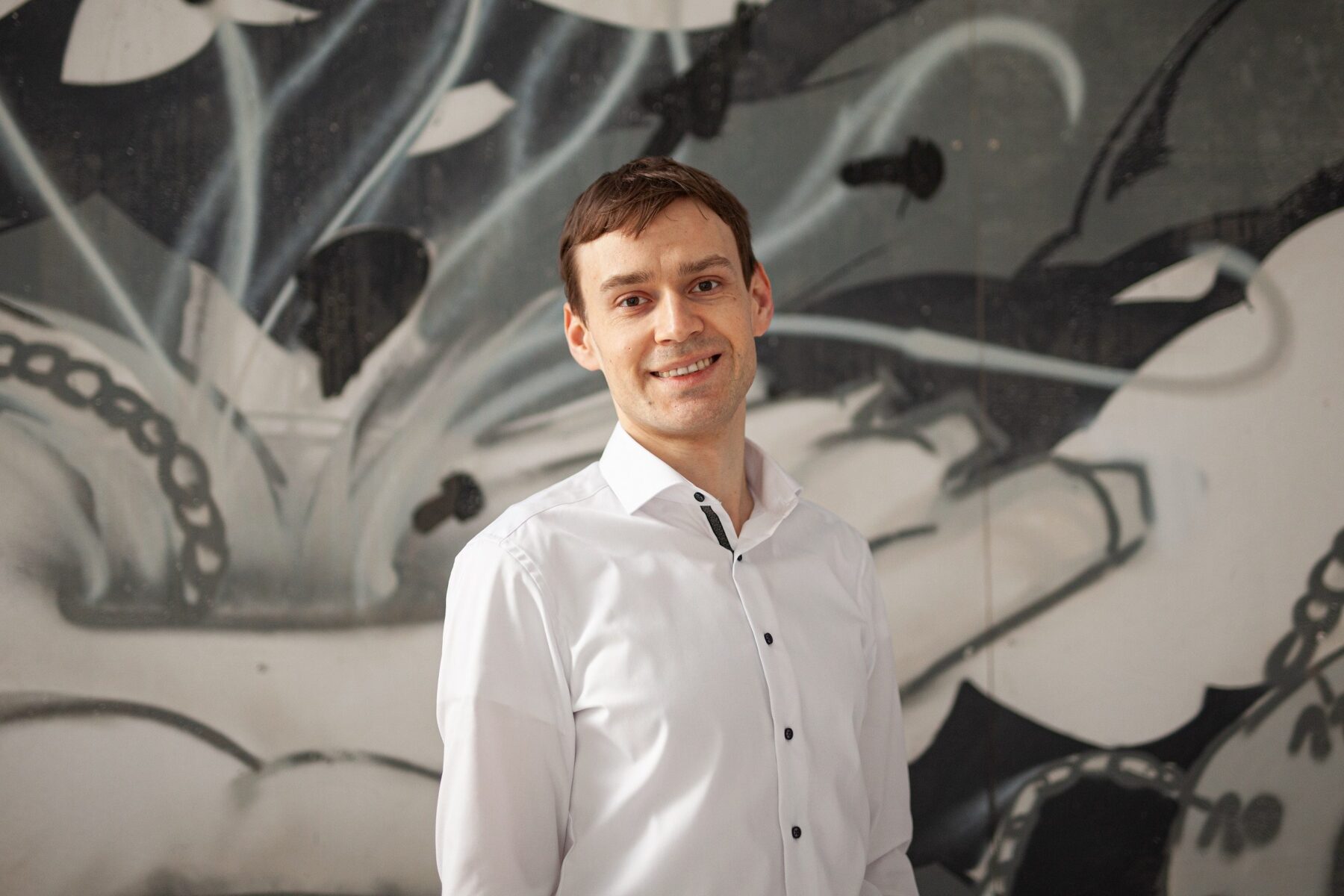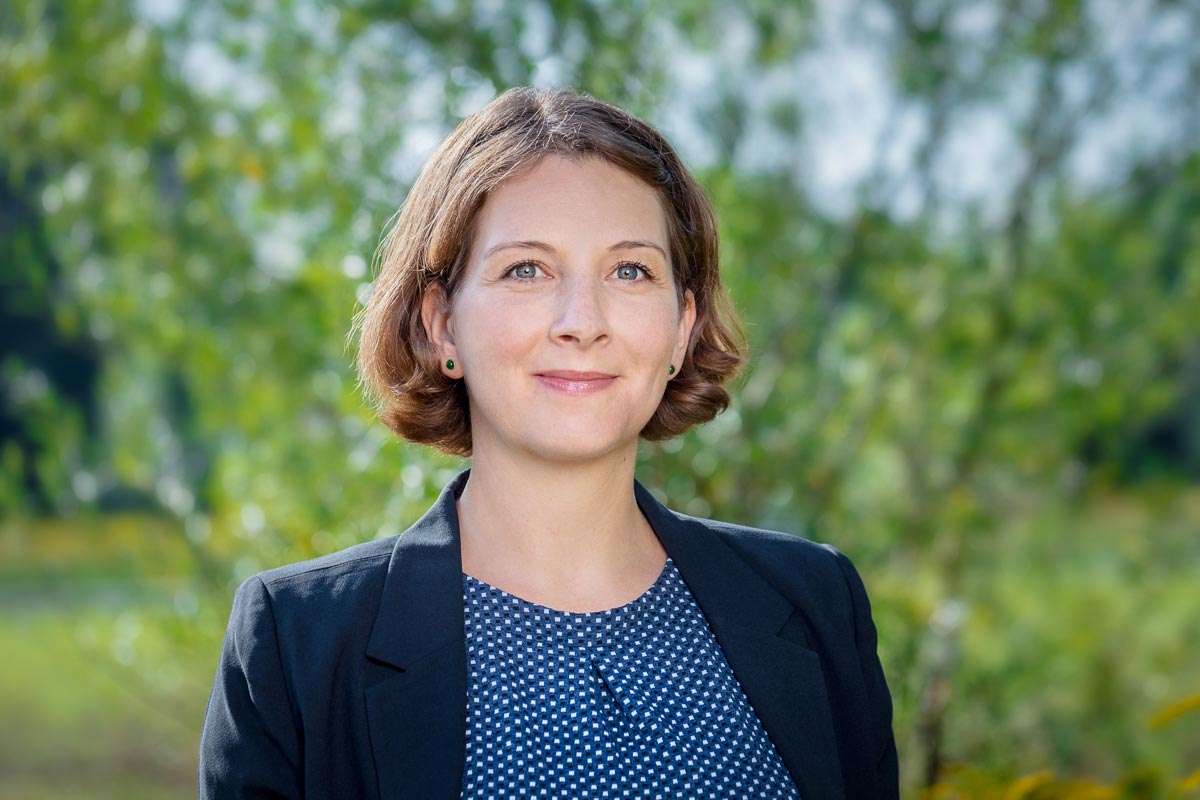
The virtue of small things
At the Max Planck Institute of Colloids and Interfaces in the Potsdam Science Park, Dr. Aleksandr Savateev conducts research in Innovative Heterogeneous Photocatalysis. The field is inspired by the natural photosynthesis of plants – and may help us to conserve many scarce natural resources.
Dr. Aleksandr Savateev appreciates small things. Microscopic things, even. Big, flashy reactions that involve flames, smoke or even the occasional bang, which many people usually associate with chemistry, are not his kind of thing. He is more impressed by those forces that exert their influence silently and unassumingly – like a leaf on a tree, which converts light energy into chemical energy and stores it in carbohydrate molecules, such as sugars and starches. Of course, he may be somewhat biased in this regard. Dr. Savateev works as a group leader for the Max Planck Institute of Colloids and Interfaces in the Potsdam Science Park – in Innovative Heterogeneous Photocatalysis.
A process perfected for millions of years
When explaining the peculiarities of his field, he speaks with admiration of this process of photosynthesis in plants, which he considers as something of a natural paragon to his work. “Plant-cells are basically small, solar-powered factories”, Dr. Savateev says: “Plants are what we call photoautotrophs. They can synthesize their food directly from carbon dioxide and water, using no other source of energy but natural sunlight. The only by-product that they release is oxygen.” To him, this ability remains mostly unsurpassed by every man-made technology: “Nature has perfected this process for millions of years. There is nothing for us to improve there. But we can learn from nature, try to copy it or adapt it to other areas of application.”
With Innovative Heterogeneous Photocatalysis, Dr. Savateev tries to do just that. By using chemical catalysts, chemists of his field accelerate reactions that use the energy of light (usually from an artificial source), so-called photoreactions, to create desired products, such as materials for industrial application. Aleksandr Savateev is specialized in researching the use of carbon nitride nanomaterials as catalysts for such reactions. To him, they possess extraordinary potential to redefine organic synthesis and make it a lot simpler, more universal and applicable. His success so far supports his hope. When it comes to number of publications and their citations, two major indicators of significance in academic research, Dr. Savateev and his team take the topmost position in the field of carbon nitride photocatalysis in all of Europe.
Saving scarce resources through innovative chemistry
“This positive attention is of course flattering”, he says. What drives him the most, however, is to make his research count outside the academic world, too.
“Photocatalysis is already being used in the chemical industry, especially in cosmetics”, he explains, suggesting the production of rose oxide as an example: “As the name implies, flowers do play a role here.” Rose oxide is a fragrance chemical found in roses. It is often used in the industrial production of cosmetic articles, such as perfumes. To Aleksandr Savateev, it perfectly illustrates how photocatalysis can help the chemical industry to become sustainable. “You could extract this chemical from real roses. At first glance, this may look like the sustainable thing to do. But it isn’t, really”, he cautions: “Of course, planting a field of roses has a positive effect on our climate. The plants bind carbon dioxide from our atmosphere and produce oxygen for us to breathe.” However, when considering the conservation of natural resources, this method becomes problematic, he explains and calculates: “To produce one kilogram of rose oxide molecules, you’d have to use three thousand kilograms of roses. Lots of hectares of land just for the production of perfume – land that could otherwise be used to grow more essential plants, like crops for the food industry and to fight global hunger” Dr. Savateev notes. “With the help of photocatalysis, we can produce rose oxide much cheaper and by using a lot less resources.”
“With the increased use of carbon nitride in photocatalysis, on which our research is focused, we could also reduce our dependency on so-called transition metals, like Ruthenium or Iridium – two of the rarest elements on earth,” he says.
Concentrated scientific expertise
To Dr. Savateev, it is mainly the high scientific expertise concentrated at Potsdam Science Park that contributes to his work: “the ‘level’ of most researchers here is very high, and generally much above average.” This also encourages collaboration: “If you face a particularly difficult challenge, you can be confident that reaching out to colleagues from neighboring fields will get you ahead. We benefit from this synergy – expertise of few colleagues allows us to come up with something fundamentally new that will have big societal impact.” To Aleksandr Savateev, these moments usually mark the highlights of his work. “Every good project starts with a creative idea”, he says. In other words, every good project starts – small.
This blog and the projects of Standortmanagement Golm GmbH in the Potsdam Science Park are funded by the European Regional Development Fund (ERDF) and the state of Brandenburg.
Image credits: Dr. Alexandr Savateev © Standortmanagement Golm GmbH/Julia Hinz
Contact

Julia Hinz
Site marketing
julia.hinz@potsdam-sciencepark.de + 49 331 237 351 109